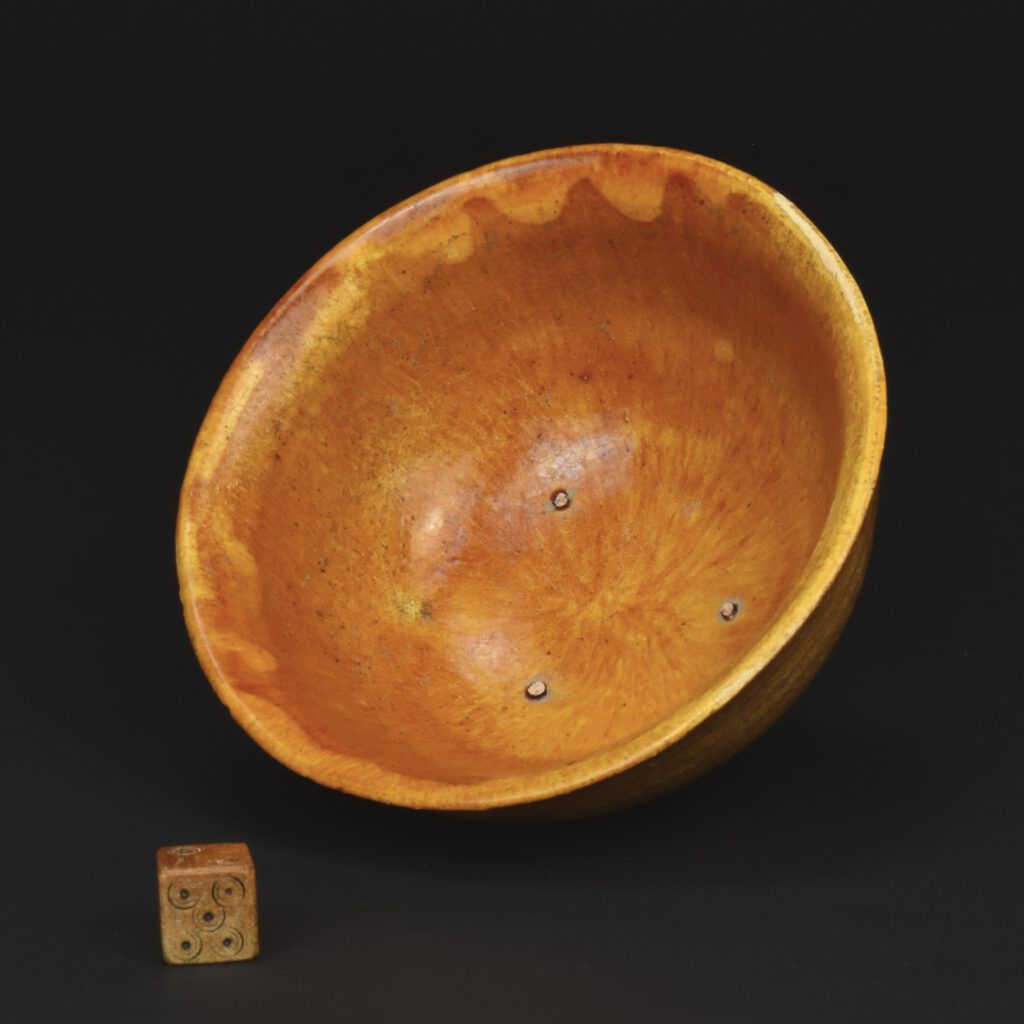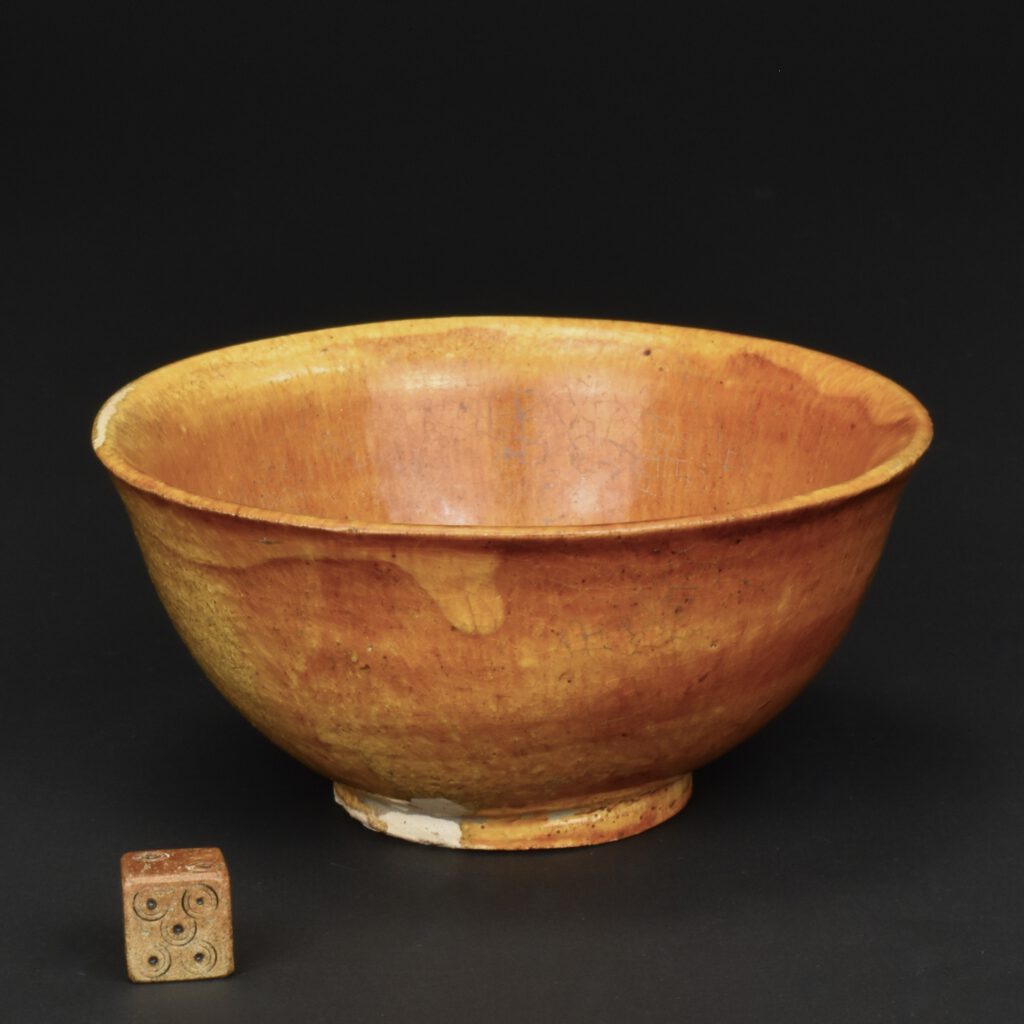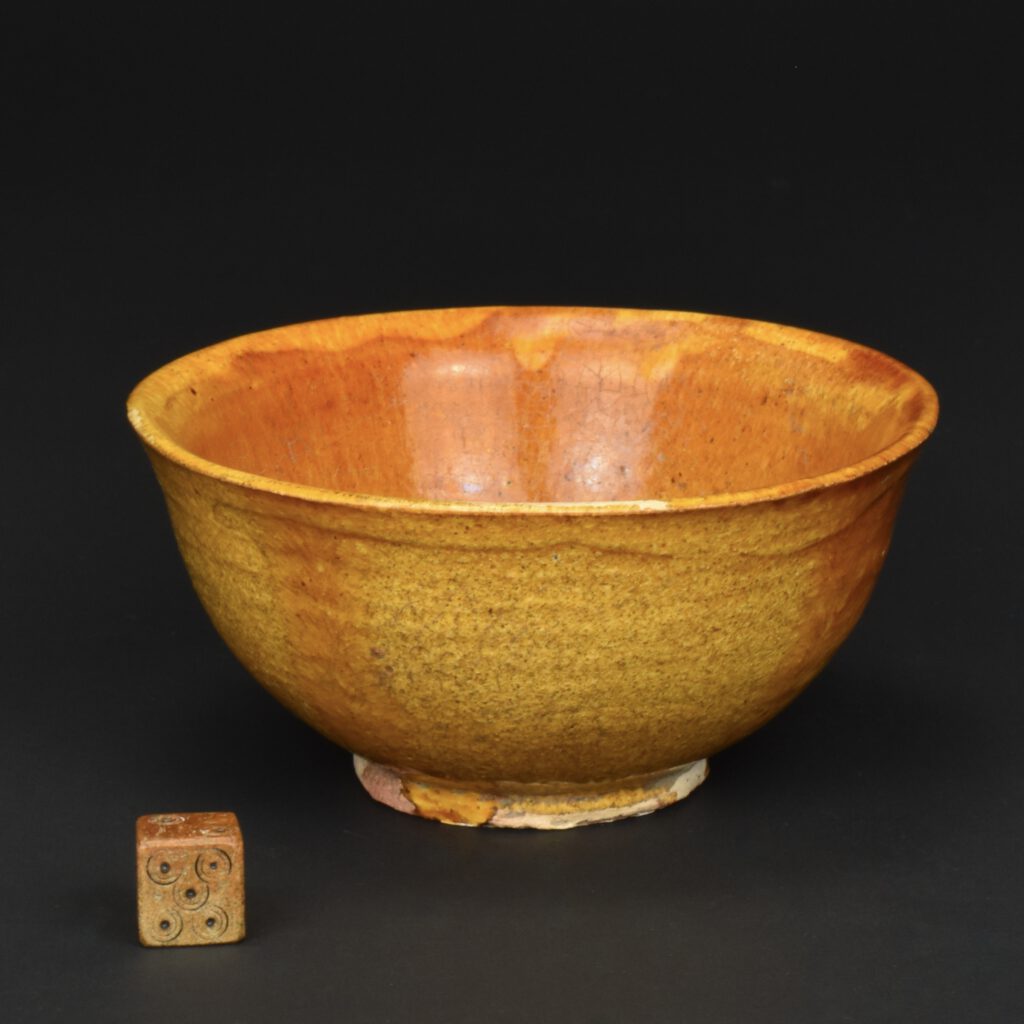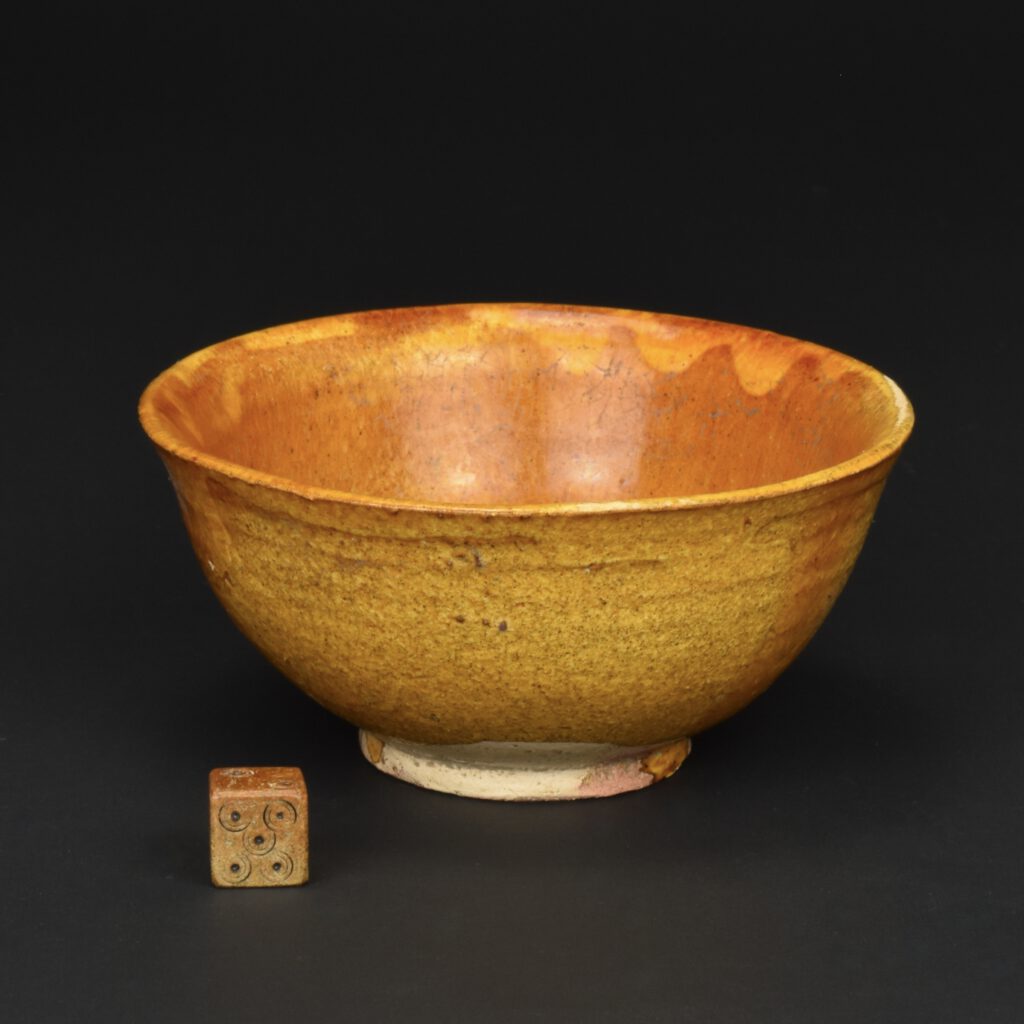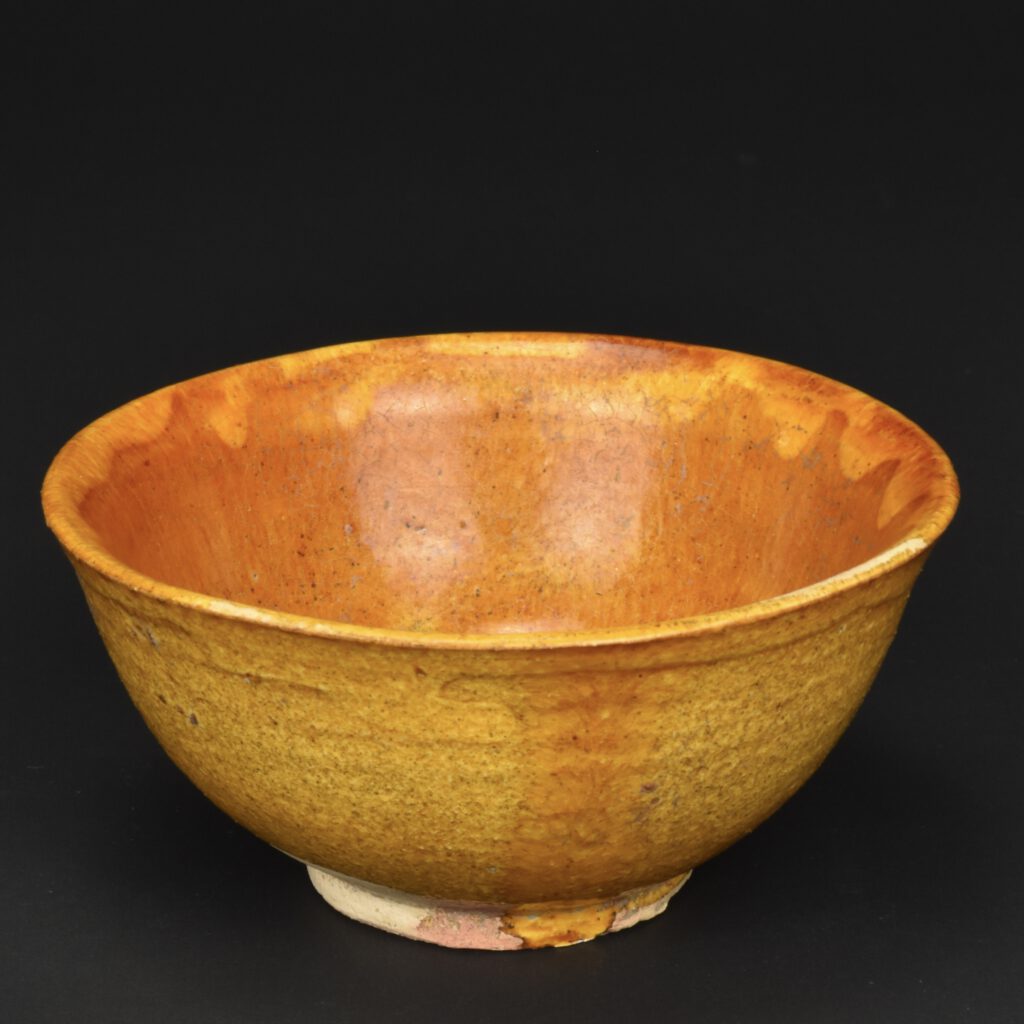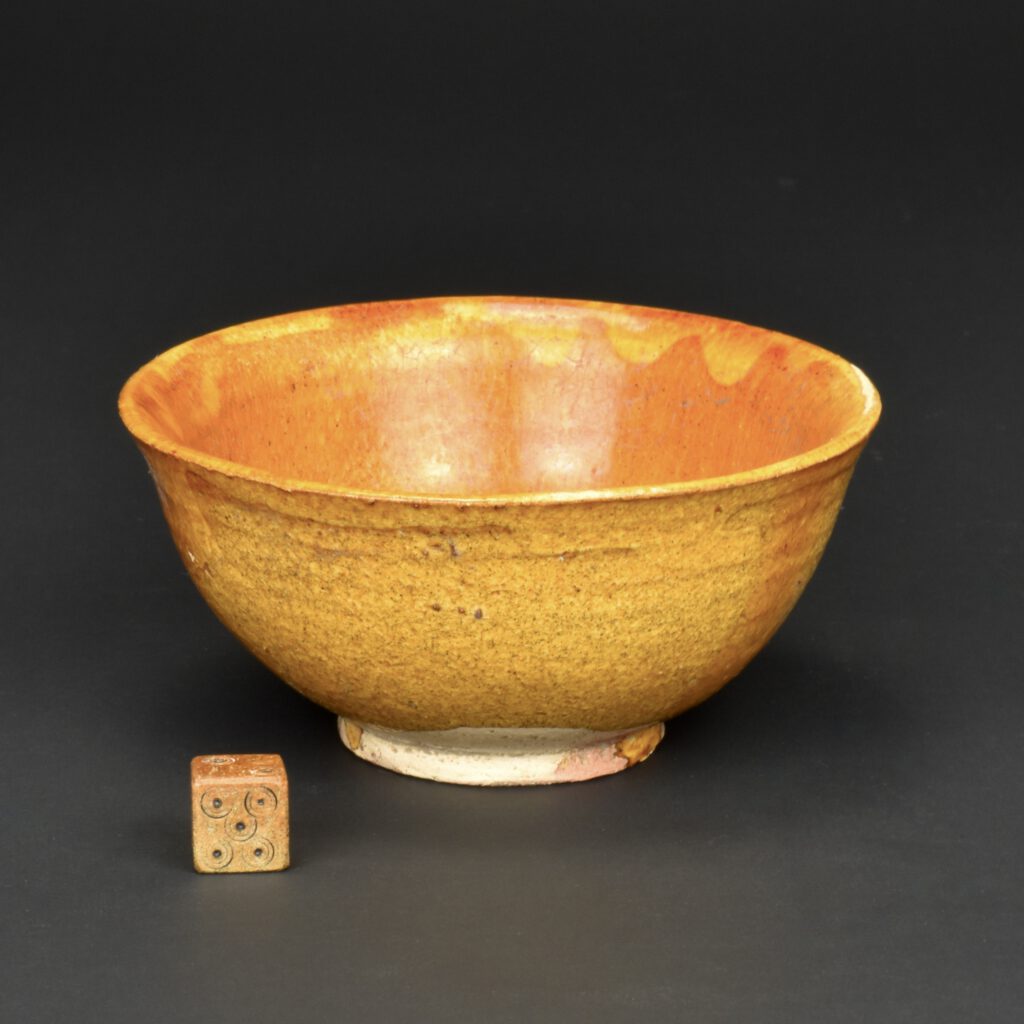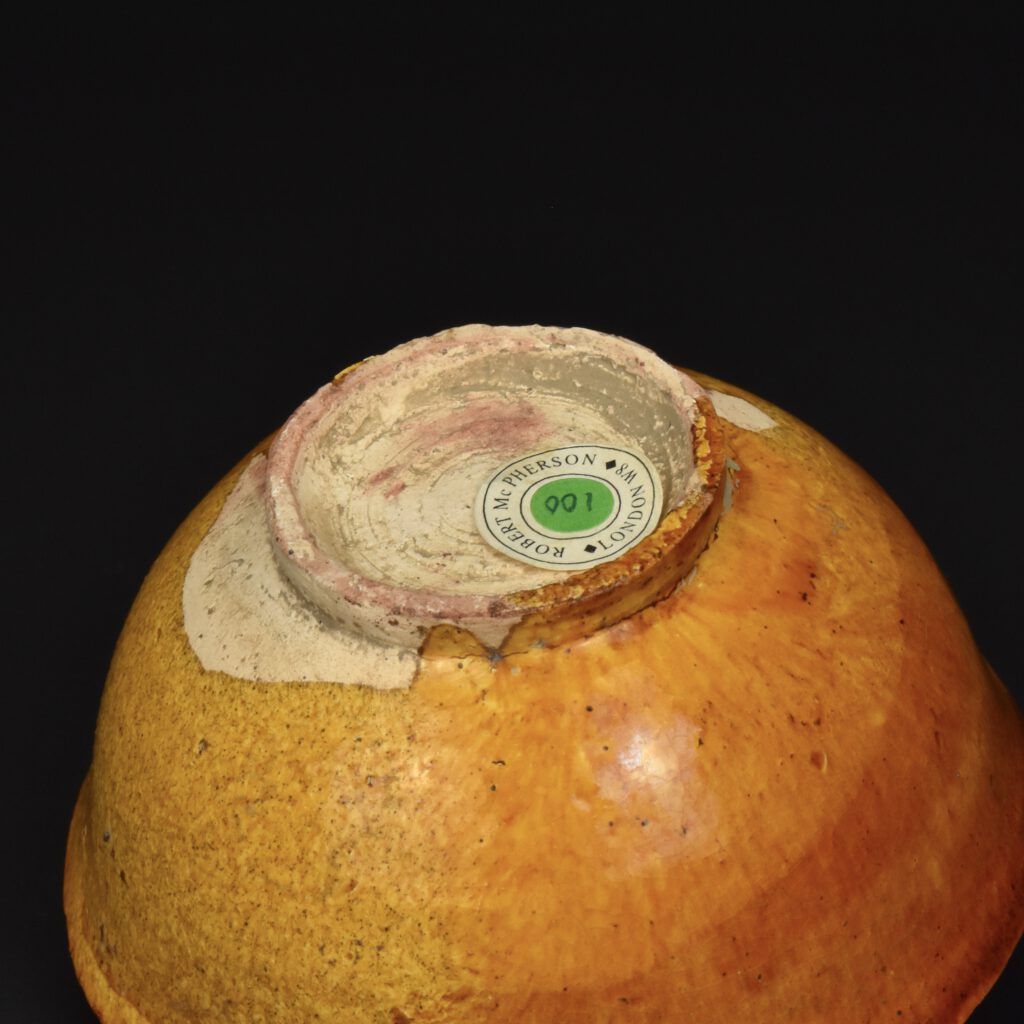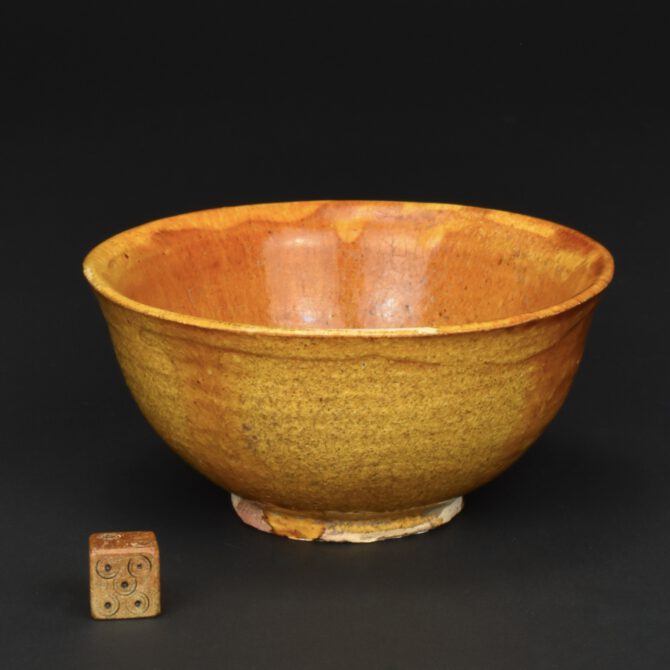
A Liao Amber Glazed Pottery Cup
A Liao Lead Glazed Cup, Liao Empire 907 – 1125. This thickly potted Liao cup has a amber coloured lead glaze, the interior has had an extra layer of glaze added, probably because the body is very porous. The well of the cup has three small fine spur marks. The glaze seems indicate that the cup might have been dried with the rim facing down, while resting with the cup supported by the three pronged kiln support.
See Below For More Photographs and Information.
SOLD
- Condition
- In very good condition, typical fine crazing. There is a small earea of the rim that is not glazed.
- Size
- Diameter 10.4 cm (4 1/8 inches)
- Provenance
- James Norbury 19th of February "2000 AD" as I wrote in my stock book (stock number 10479). Purchased by Nicholas Thompson from Robert McPherson Antiques, 12th of April 2000 for £180.
- Stock number
- 26664
Information
The Liao Dynasty:
The Liao dynasty also known as the Liao Empire (officially the Great Liao), or the Khitan Empire was an empire in East Asia that ruled from 907 to 1125 over present-day Mongolia and portions of the Russian Far East, northern Korea, and northern China. The empire was founded by Abaoji, Khagan of the Khitan people around the time of the collapse of Tang China and was the first state to control all of Manchuria.
Almost immediately after its founding, the Khitan Empire began a process of territorial expansion, with Abaoji leading a successful conquest of Balhae. Later emperors would gain the Sixteen Prefectures by fueling a proxy war that led to the collapse of the Later Tang (923–936) and would establish tributary relationships with Goryeo and Song China after failing to conquer Goryeo.
Tension between traditional Khitan social and political practices and Chinese influence and customs was a defining feature of the dynasty. This tension led to a series of succession crises; Liao emperors favored the Chinese concept of primogeniture, while much of the rest of the Khitan elite supported the traditional method of succession by the strongest candidate. So different were Khitan and Chinese practices that Abaoji set up two parallel governments. The Northern Administration governed Khitan areas following traditional Khitan practices, while the Southern Administration governed areas with large non-Khitan populations, adopting traditional Chinese governmental practices.
Differences between Chinese and Khitan society included gender roles and marital practices: the Khitans took a more egalitarian view towards gender, in sharp contrast to Chinese cultural practices that segregated men’s and women’s roles. Khitan women were taught to hunt, managed family property, and held military posts. Many marriages were not arranged, women were not required to be virgins at their first marriage, and women had the right to divorce and remarry.
The Liao dynasty was destroyed by the Jurchen people of the Jin dynasty in 1125 with the capture of Emperor Tianzuo of Liao. However, the remnant Khitan, led by Yelü Dashi, established the Qara Khitai (Western Liao dynasty), which ruled over parts of Central Asia for almost a century before being conquered by the Mongols. Although cultural achievements associated with the Liao dynasty are considerable, and a number of various statues and other artifacts exist in museums and other collections, major questions remain over the exact nature and extent of the influence of the Liao Khitan culture upon subsequent developments, such as the musical and theatrical arts.
information source: Wikipedia.
